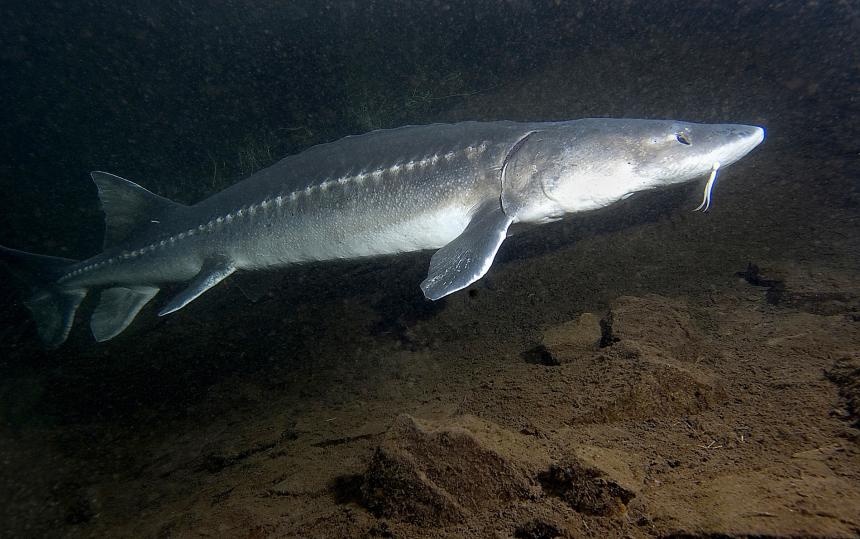Category: Fish
Ecosystems:
Marine shorelines
Vulnerability to climate change (More details)
Moderate
White sturgeon (Columbia River)
is a distinct population of White sturgeon.
Visit the White sturgeon page for more information.
Climate vulnerability
Sensitivity to climate change
Moderate
White sturgeon likely exhibit physiological sensitivity to warmer water temperatures, and increasing temperatures may reduce spawning success and/or increase disease risk and mortality. White sturgeon are also sensitive to declining spring and summer streamflows, which reduce spawning habitat and annual recruitment; loss of spawning habitat and reduced recruitment associated with lower streamflows is a particular concern for impounded portions of the Columbia River. Shifts in ocean conditions may also affect prey availability for young white sturgeon in estuarine environments, and reduced prey availability has been linked with undermined sturgeon growth.
Confidence: Low
Exposure to climate change
Moderate
- Increased water temperatures
- Lower summer flows
Confidence: Moderate
Conservation
This species is identified as a Species of Greatest Conservation Need (SGCN) under
the State Wildlife Action Plan (SWAP). SGCN-classified species include both those with
and without legal protection status under the Federal or State Endangered Species programs,
as well as game species with low populations. The WDFW SWAP is part of a nationwide effort
by all 50 states and five U.S. territories to develop conservation action plans for fish,
wildlife and their natural habitats—identifying opportunities for species' recovery
before they are imperiled and more limited.
This species is identified as a Priority Species under WDFW's Priority Habitat and Species Program. Priority
species require protective measures for their survival due to their population status, sensitivity to habitat
alteration, and/or recreational, commercial, or tribal importance. The PHS program is the agency's main means
of sharing fish and wildlife information with local governments, landowners, and others who use it to
protect priority habitats for land use planning.
